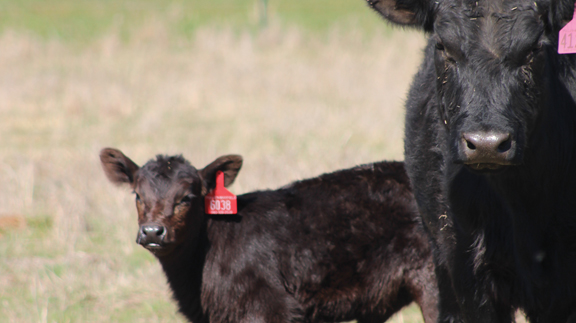Farm & Ranch
Meanwhile back at the ranch…

By Rayford Pullen, [email protected]
Hopefully, your spring calving is completed. If not, you will be dealing with the problems those late calvers bring to the table for many years to come. While we all deal with this problem to some degree, late calving cows will be raising calves that do not fit into our program for not only working calves and shipping calves, but they will be less apt to breed back due to the fact that when the weather gets really hot, bull fertility drops significantly, which may be nature’s way of preventing summer calves which never perform as well as the earlier born calves due in part to the fact that forage quality deteriorates almost as proportionately as the temperature rises and milk production declines due to the same factors.
Although I am writing this article with over a week left in the month of March, 90 percent of our first calf heifers have already calved and 96 percent of them are raising a calf.
One calf died during the calving process and one calf appeared to have been born premature while two calves died within two weeks of being born for reasons we are not sure about.
We pulled three percent of all the calves born, one with a calf puller and two by hand just to be on the safe side. The mild winter we had this year reduced our mortality greatly which means our live calves are running around 97 percent for all cows that calved. To read more pick up a copy of the May 2016 issue.
Farm & Ranch
Hazards of Backyard Poultry

By Barry Whitworth, DVM
Having backyard poultry is a popular agriculture enterprise. According to the United States Department of Agriculture, 0.8 percent of all households in the United States have chickens. People keep chickens for a variety of reasons with table eggs being one of the more common reasons.
Unfortunately, some of these poultry producers are not aware of the hazards that come with keeping poultry because many times they carry pathogens but appear healthy.
Chickens are carriers of several zoonotic diseases. These are diseases that can be passed from animals to humans. According to a recent survey in Pennsylvania, a majority of backyard poultry producers were aware of the dangers of avian influenza. However, this study also revealed that far fewer producers were aware of the risk of possible exposure to Salmonella and Campylobacter.
The lack of knowledge about the hazards of raising poultry likely contributes to the continued issues of Salmonella outbreaks associated with backyard poultry. In 2023, the Centers for Disease Control and Prevention reported 1,072 illnesses of Salmonella linked to backyard poultry, and 272 of those patients required hospitalization. Oklahoma reported 43 individuals with the disease.
To read more, pick up a copy of the April issue of NTFR magazine. To subscribe by mail, call 940-872-5922.
Farm & Ranch
Ag Elsewhere: Wyoming

By Tressa Lawrence
Babies are tucked away in every nook and cranny. Many ranchers across Wyoming have baby animals popping up all over this time of year.
Farm & Ranch
Ag Elsewhere: Montana

By Lindsey Monk
Another load of grain in to keep feeding the calves until the green grass can really start popping.
-

 Country Lifestyles1 year ago
Country Lifestyles1 year agoScott & Stacey Schumacher: A Growth Mindset
-

 Equine7 months ago
Equine7 months agoThe Will to Win
-

 Country Lifestyles7 years ago
Country Lifestyles7 years agoStyle Your Profile – What your style cowboy hat says about you and new trends in 2017
-

 Country Lifestyles4 years ago
Country Lifestyles4 years agoAmber Crawford, Breakaway Roper
-

 HOME7 years ago
HOME7 years agoGrazing North Texas – Wilman Lovegrass
-

 Country Lifestyles7 years ago
Country Lifestyles7 years agoDecember 2016 Profile, Rusty Riddle – The Riddle Way
-

 Country Lifestyles8 years ago
Country Lifestyles8 years agoJune 2016 Profile – The man behind the mic: Bob Tallman
-

 Outdoor9 years ago
Outdoor9 years agoButtercup or Primrose?






